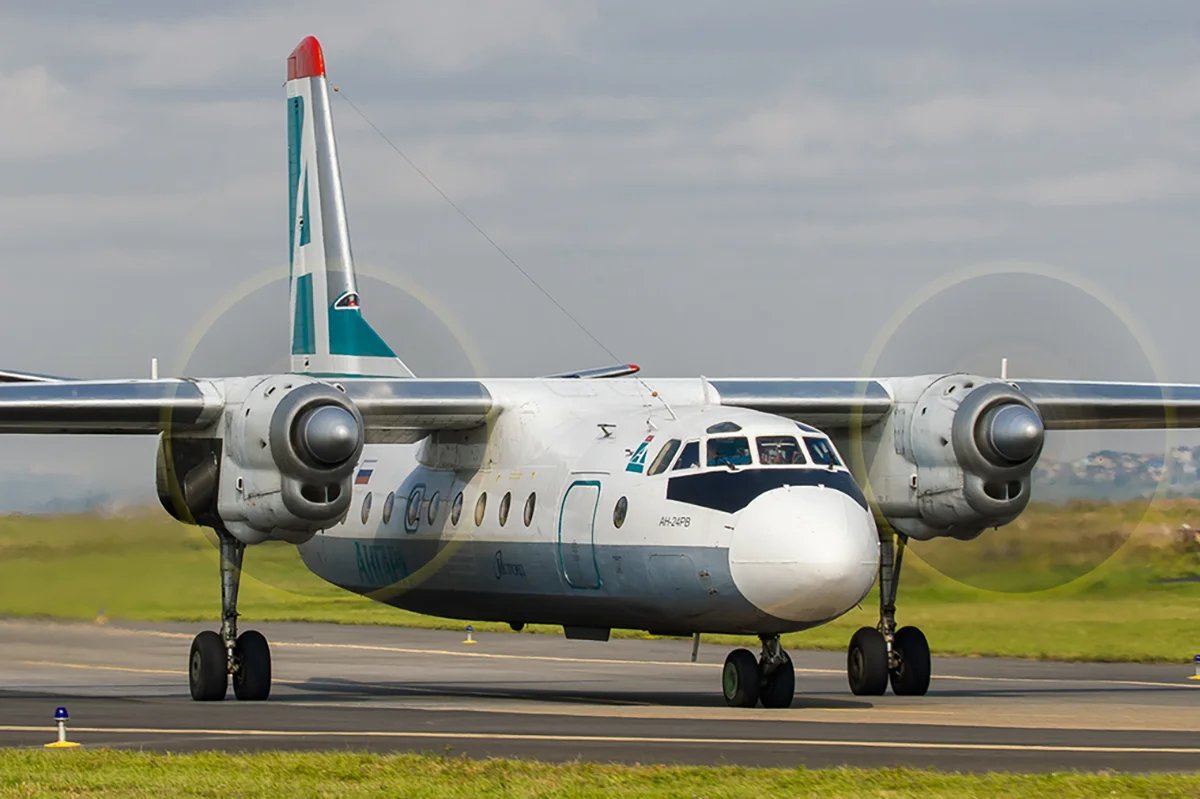



An Antonov-24 aircraft, manufactured in 1976, crashed in the Amur region of Russia’s Far East on Thursday, killing all 48 people on board. Despite numerous complaints from passengers, the plane has recently been certified airworthy until 2036. The crash has sparked further concerns about the state of Russian aviation.
The plane, operated by Irkutsk-based Angara Airlines and flying from Khabarovsk to Tynda via Blagoveshchensk, disappeared when performing a second loop as it prepared to come into land.
Passengers noticed steam emanating from an overhead locker and commented that the plane was very old in video footage published by breaking news Telegram channel SHOT, sent in by passengers who got off the plane at Blagoveshchensk, hours before the fatal crash occurred.
The Antonov-24 plane recorded a malfunction four months before the crash, in March, when one set of radios on the aircraft failed as it was at Irkutsk Airport, preparing to fly to Kirensk, a town in the same region, the channel added.
Angara Airlines passengers also left numerous complaints on social media about the state of the aircraft in the years preceding the crash, Telegram channel Baza reported. “It feels like the air company does not give a damn about its passengers. You fly and you pray … It’s terrifying,” one passenger wrote in July 2023.
“We even have a 78-year-old Antonov-2 still in operation.”
Angara Airlines informed customers at the time that the aircraft’s service life had recently been extended to 60 years, being certified airworthy until 2036 in 2021, and assured passengers that all of its planes undergo the necessary maintenance.
Still, even after the accident, experts doubted that the aircraft’s age had caused the plane to crash in comments to Russian state media. Vladimir Barsuk from the Chaplygin Siberian Aviation Research Institute told TASS news agency that as long as the plane was in sound condition, its long life should not play an “overly significant role” in its likelihood to crash.
Even new aircraft sometimes exhibit defects, Barsuk noted, while some planes fly for between 60 and 70 years. “We even have a 78-year-old Antonov-2 still in operation,” he added.

The Antonov-24 RA-47315 aircraft. Photo: russianplanes.net
While doubts about the safety of such aircraft are understandable, there are no other planes fit to take over on the routes in remote Russian regions, aviation journalist Andrey Menshenin told Novaya Gazeta Europe.
No modern Russian aircraft are capable of landing at regional airfields where there isn’t always a tarmac or concrete runway, and importing foreign aircraft was expensive before the war and is virtually impossible now, when sanctions are in place, he added.
Menshenin agrees with Barsuk, however, that age need not negatively impact safety levels. He says that commercial flights globally are routinely carried out by planes which are 70 years old, but notes those are more frequently cargo planes.
But it all depends on the regularity and quality of maintenance, Menshenin stressed — which has become increasingly difficult under sanctions without specialist personnel and direct access to components and supplies.
Russian airlines currently have over 50 Antonov-24s in their fleets, according to state-owned news agency RIA Novosti. Airlines are likely to continue using them, as the alternative would be the cessation of remote air routes altogether, which would adversely affect accessibility to these regions, Menshenin said.
Civil aviation expert Andrey Litvinov told Irkutsk news website IrCity that while the Antonov-24 was once reliable, it is now obsolete. Like Menshenin, he says the aircraft are only still in the air because there is no alternative, due to “poor airfields and poor airstrips”.
“It’s why we have to start manufacturing more quickly planes that can operate these routes,” Litvinov added.
“These planes will continue to fall apart because they are well and truly out-of-date.”
While the situation remains unchanged, accidents — some fatal — are likely to continue. Novaya Gazeta Europe previously estimated that the number of safety incidents involving passenger planes in Russia had risen by at least 30% last year compared to 2023, amid strict international sanctions imposed on the country and insufficient maintenance.
Older planes such as Antonov-24 are in particular danger. In the summer of 2019, another Angara Airlines Antonov-24 with 43 passengers on board rolled off the runway, crashed into a building and was completely burnt out in the Buryat town of Nizhneangarsk. Two staff members were killed, though all the passengers were successfully evacuated.
The East Siberian Prosecutor’s Office for Transport subsequently ruled that the accident was caused by buildings illegally being constructed too close to the Nizhneangarsk airfield runway, without taking the aircraft’s age — 42 years at the time of the crash — and maintenance level into consideration.
“These planes will continue to fall apart because they are well and truly out-of-date,” Litvinov stressed.
